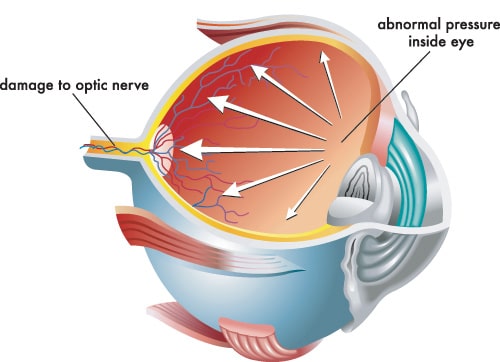
Glaucoma is a leading cause of vision loss worldwide, affecting millions of people. At Clarity Eye Center, our glaucoma specialists have the expertise to help detect and treat glaucoma to ensure you experience clear and complete vision for years to come.
What is Glaucoma?
Glaucoma is a group of eye conditions that damage the optic nerve, which is crucial for good vision. This damage is often caused by abnormally high pressure inside your eye.
Glaucoma is sometimes called the “silent thief of sight” because it can develop slowly over many years without noticeable symptoms in its early stages. The most common type is open-angle glaucoma, where the drainage angle formed by the cornea and iris remains open, but the drainage canals gradually become clogged.
This leads to increased eye pressure and eventual optic nerve damage. Another type is angle-closure glaucoma, which can occur suddenly when the drainage angle closes or narrows, causing a rapid increase in eye pressure.
Glaucoma typically begins by affecting peripheral or side vision, but as it progresses, it can lead to tunnel vision and, eventually, total vision loss if left untreated. That’s why early detection and treatment are crucial in preventing vision loss from glaucoma.
How is Glaucoma Detected?
Early detection of glaucoma is essential for preventing vision loss. Since glaucoma often develops without any noticeable symptoms, regular comprehensive eye exams are important, especially if you’re in a high-risk group.
During a glaucoma screening, your eye doctor will perform several tests. These typically include:
- Tonometry: This test measures your eye pressure.
- Visual Field Test: This checks for areas of vision loss, which can indicate damage to the optic nerve.
- Optic Nerve Examination: Your eye doctor will examine your optic nerve for any signs of changes that could indicate glaucoma
These tests are painless and quick, but they provide crucial information about your eye health. At Clarity Eye Center, we use state-of-the-art technology to ensure accurate and early detection of glaucoma.
How is Glaucoma Treated?
While there is no cure for glaucoma, early treatment can often prevent further vision loss and help control the condition. The goal of glaucoma treatment is to lower eye pressure to prevent damage to the optic nerve.
Treatment options can range depending on the type and severity of glaucoma, and other factors.
Prescription Eye Drops
Eye drops are often the first line of treatment for glaucoma. These medications work by either reducing the production of fluid in the eye or increasing its outflow, both of which can help lower intraocular pressure.
Laser Procedures
When eye drops alone aren’t sufficient to control eye pressure, or if a patient has difficulty using drops consistently, laser treatments can be an effective option. Two common laser procedures for glaucoma are Selective Laser Trabeculoplasty, also called SLT, and Argon Laser Trabeculoplasty, also called ALT. Both SLT and ALT can be effective in reducing or eliminating the need for eye drops in some patients.
Traditional Glaucoma Surgery and MIGS
In cases where medication and laser treatments aren’t adequate to control eye pressure, or for certain types of glaucoma, surgery may be necessary. There are several surgical options available, including traditional glaucoma surgery and minimally invasive glaucoma surgery, often called MIGS.
MIGS are newer procedures that aim to lower eye pressure with less risk and faster recovery compared to traditional surgery. At Clarity Eye Center, our glaucoma specialists offer a variety of MIGS procedures, including XEN Gel Stent, Ahmed, and Cyclophotocoagulation (CPC).
At Clarity Eye Center, your eye doctor will tailor the treatment approach to your specific circumstance, considering factors such as the type and severity of glaucoma, overall health, and lifestyle needs.
Do you want to learn more about glaucoma or have your eyes screened? Schedule an appointment at Clarity Eye Center in Georgetown, TX, today!


